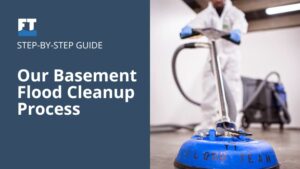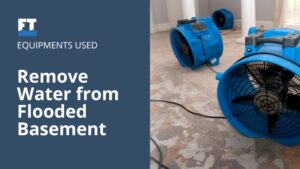Your home is quiet, calm, and dry, or so you think. Somewhere behind the walls or under the floors, moisture is quietly settling in, hidden from sight. And with it comes an unwelcome guest that doesn’t knock: mold. You may not see it right away, but it’s growing, spreading, and waiting for the perfect moment to make itself known.
A report from the Environmental Protection Agency (EPA) explains that exposure to indoor mold can affect health, particularly in individuals with sensitive immune systems. Mold releases allergens, irritants, and sometimes toxic substances called mycotoxins. Even when mold is no longer active, dead spores can still trigger allergic reactions through inhalation or physical contact.
In this blog, we’ll uncover the connection between water damage and mold problems, why it happens so quickly, and how you can spot the warning signs before things get out of hand.
Why Water Damage Is a Big Deal
Most people think of water damage as a flooded basement or a soaked carpet. But it can be much more subtle. In fact, 85% of the buildings experienced water damage in the past, often from issues that weren’t immediately visible. A small roof leak or a pipe dripping behind a wall can go unnoticed for weeks. During that time, moisture builds up.
Once water seeps into materials like drywall, wood, or insulation, it doesn’t dry quickly. Those damp areas become the perfect spot for mold to grow. And unlike a puddle on the floor, you won’t always see it right away. Over time, water damage weakens your home structure, making small leaks a much bigger problem than they first appear.
Moisture also raises indoor humidity. Even without visible leaks, constant dampness resulting from poor ventilation in bathrooms or basements can lead to mold growth.
How Mold Forms After Water Damage
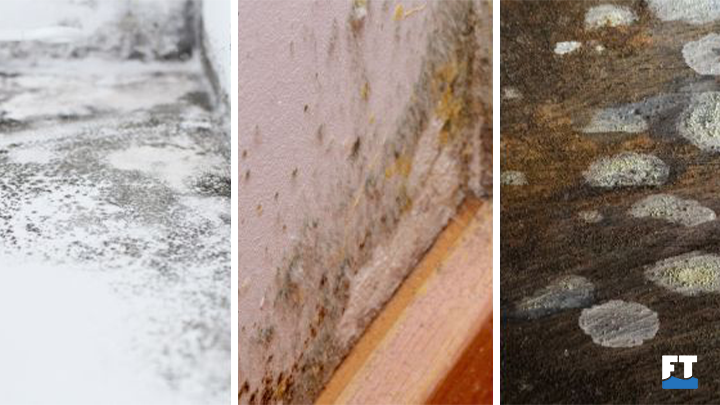
Mold is a natural part of the environment. It’s always floating around in tiny spores. But it only becomes a problem when it finds a wet surface to settle on.
After water damage, mold can start growing in as little as 24 to 48 hours. That’s not a lot of time to react.
It feeds on organic materials like wood, carpet, wallpaper, and even dust. It thrives in dark, damp, and warm spots. So a leaky pipe inside a wall is pretty much a welcome mat for mold.
Some common types of mold found in homes include:
- Genus Cladosporium (black or green, often on wood)
- Penicillium (blue or green, on wallpaper or carpet)
- Stachybotrys (known as black mold, usually toxic, grows on damp drywall)
Why Water Damage Often Leads to Mold
Mold needs moisture to grow. Mold is a living organism, and like most living things, it needs moisture to grow. That moisture often comes from places we don’t think about every day. A pipe under the sink has a slow drip. Condensation is forming behind furniture. A basement that never quite dries out.
Even a little water, if it sits too long, creates the perfect environment. Add a dark space with poor airflow, and mold will quickly settle in.
How to Prevent Mold After Water Damage
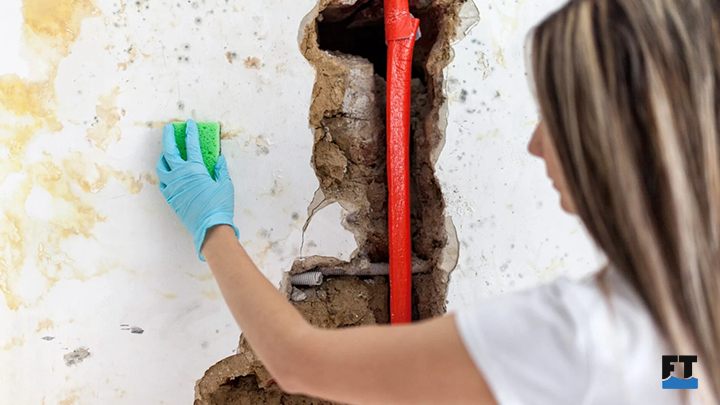
Step one is obvious: stop the source. Whether it’s a leak, flood, or pipe issue, you need to dry everything out as quickly as possible.
Here’s what helps:
- Use fans and open windows if the weather allows
- Run dehumidifiers to pull moisture from the air
- Remove soaked items like rugs, mattresses, or drywall
- Clean and disinfect hard surfaces
If the damage is extensive or recurring, it’s time to call a professional mold removal company. An expert mold remediation company can inspect behind walls, test the air, and ensure that no spores are left undetected.
Worried About Mold After Water Damage?
Don’t wait for a musty smell or visible stains mold can start growing within just 24 hours. At The Flood Team, we specialize in fast, professional water damage restoration and mold remediation to protect your home and health.
Contact us and prevent mold from spreading.
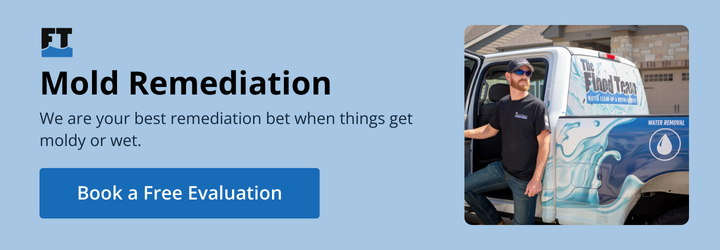
Final Thoughts
Water damage is a silent troublemaker. Left alone, it creates perfect conditions for mold to grow and spread. Your health, your home, and your wallet all take the hit. But with some awareness and fast action, you can catch these issues early. Don’t ignore the drips, stains, or smells. They’re warning signs for something much bigger.
FAQs
How fast can mold grow after water damage?
Mold can start growing in as little as 24 to 48 hours if the area remains damp and warm.
Can I remove the mold myself after a water damage incident?
Small spots may be manageable with proper safety measures, but hidden or large areas require professional attention.
Does insurance cover mold from water damage?
Sometimes, yes—if the cause is sudden and accidental. Gradual leaks are often not covered.
What does mold smell like?
A strong, musty, earthy odor is the most common giveaway, even before you see any mold.
How do I check for water damage inside walls?
Look for bubbling paint, stains, soft drywall, or cold, damp spots. A moisture meter can help identify issues without requiring wall openings.


